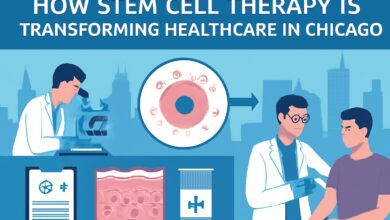How Estrogen Influences Your Skin Health
When it comes to glowing, healthy skin, many factors play a role—nutrition, hydration, sleep, and skincare routines all matter. But one of the less talked about yet incredibly powerful influences on skin health is a hormone called estrogen. This hormone is often associated primarily with reproductive health, but its impact stretches far beyond that. Estrogen plays a crucial role in maintaining the youthful appearance and function of your skin. Understanding how estrogen influences your skin can help you appreciate your body’s natural processes and empower you to take better care of your skin.
The skin is the largest organ of the body, and it undergoes constant changes influenced by hormonal fluctuations. Estrogen helps regulate several functions within the skin, from hydration to collagen production, and it acts as a protector against aging and environmental damage. Many people notice significant skin changes during different life stages, such as puberty, pregnancy, or menopause—all times when estrogen levels shift dramatically. These observations highlight just how vital estrogen is to skin health.
Estrogen and Its Role in Skin Physiology
Estrogen is a group of hormones, with estradiol being the most prominent form in women of reproductive age. It interacts with specific receptors located in the skin’s cells, influencing how these cells behave. One of the most significant effects of estrogen on the skin is its ability to stimulate the production of collagen—a structural protein that keeps skin firm, elastic, and youthful-looking.
Collagen naturally declines as we age, which leads to wrinkles, sagging, and a loss of skin resilience. Estrogen helps slow this decline by encouraging skin cells to produce more collagen and by inhibiting enzymes that break it down. This protective effect is why skin tends to be plumper, smoother, and better hydrated during periods of higher estrogen, such as in youth or pregnancy.
Besides collagen, estrogen also affects the skin’s moisture levels. It promotes the synthesis of hyaluronic acid, a molecule that attracts and holds water within the skin, maintaining its hydration and suppleness. This means estrogen helps keep your skin soft and glowing by preserving its natural moisture barrier.
Estrogen’s Protective Effects Against Aging and Damage
The aging process can be tough on your skin, but estrogen provides several layers of defense to mitigate these effects. Apart from boosting collagen and hydration, estrogen has antioxidant properties that help neutralize harmful free radicals generated by environmental stressors like UV radiation and pollution. Free radicals accelerate skin aging by damaging DNA and cellular structures, but estrogen’s antioxidant role helps shield your skin from this damage.
Additionally, estrogen enhances skin thickness and blood flow. Thicker skin is less prone to injury and more resilient overall, while better blood flow ensures your skin receives ample oxygen and nutrients necessary for repair and regeneration. This increased circulation also contributes to that natural healthy glow often associated with youthful skin.
How Estrogen Levels Affect Skin Throughout Life
Estrogen levels fluctuate significantly throughout a person’s life, and these changes often correspond with noticeable shifts in skin condition. During puberty, rising estrogen levels contribute to increased oil production and the development of a youthful complexion. Pregnancy is another time of high estrogen levels, often resulting in radiant, glowing skin due to heightened collagen and moisture production.
However, estrogen levels decline sharply during menopause, which can trigger a cascade of skin concerns. Many women experience dryness, thinning skin, increased wrinkles, and slower wound healing. This decline highlights estrogen’s role as a key hormone in maintaining skin health. The drop in estrogen also affects the skin’s ability to retain moisture and collagen, which is why menopausal skin often feels rougher and less elastic.
For men, although estrogen levels are much lower, this hormone still plays a subtle role in skin health, influencing oil production and hydration. The balance between estrogen and other hormones like testosterone can impact conditions such as acne or dry skin.
Lifestyle Factors That Influence Estrogen and Skin Health
While your body naturally produces estrogen, lifestyle factors can influence its levels and how effectively it supports your skin. Maintaining a balanced diet rich in phytoestrogens—plant-based compounds that mimic estrogen—can help support skin health. Foods such as flaxseeds, soy, and legumes contain these compounds and may contribute to a gentle estrogen-like effect on the skin.
Exercise also plays a role by helping regulate hormone levels and improving blood circulation, which benefits the skin. Stress management is crucial because chronic stress can disrupt hormone balance, potentially lowering estrogen and impairing skin health.
Avoiding excessive sun exposure and using sun protection is another vital step since UV rays can break down collagen and increase free radical damage. Estrogen helps repair some of this damage, but prevention is always better.
You can learn more about estrogen’s impact on your body and skin here:
Summary
Estrogen is an unsung hero in the realm of skin health. Its ability to boost collagen, maintain hydration, protect against damage, and promote skin regeneration makes it indispensable for maintaining a youthful, vibrant complexion. Whether you’re experiencing the glow of puberty, the radiance of pregnancy, or navigating the challenges of menopause, understanding estrogen’s role empowers you to care for your skin more effectively.
By adopting a lifestyle that supports healthy estrogen levels—through diet, exercise, stress management, and sun protection—you can help your skin maintain its vitality longer. So next time you admire your skin’s natural glow, remember that estrogen is likely playing a big part in that radiant picture.

